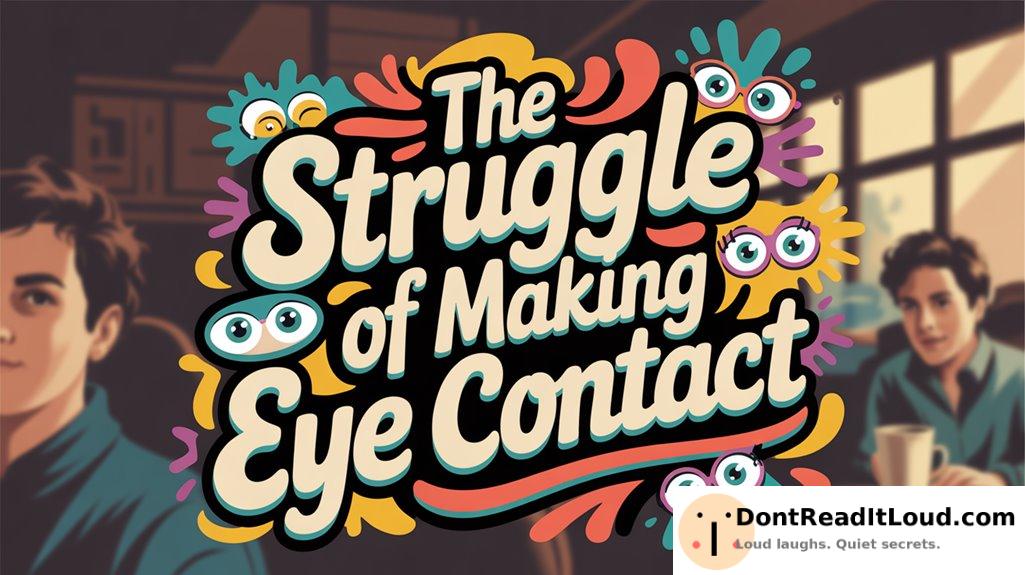
Making eye contact often feels intimidating, especially when social anxiety takes over. You might experience sweaty palms and a rush of thoughts as you try to appear confident without seeming intense. Cultural differences can make things even more confusing, leaving you unsure of what’s acceptable. Remember, many people struggle with this too. Take small steps, like starting with brief glances, to build comfort. There’s a lot to learn about this subtle skill.
Why does making eye contact feel so powerful? It’s like holding a secret weapon that, when used well, can tip the odds in your favor—or at least help settle who’s doing the dishes. But for many people, meeting someone’s gaze can make your palms sweaty and your thoughts race faster than a squirrel on caffeine. Social anxiety kicks in, and suddenly, eye contact feels like an extreme sport.
Let’s face it, eye contact is complicated. You want to seem confident, but not intimidating. Friendly, but not overly eager, like a golden retriever chasing a tennis ball. Cultural differences add another twist. In some places, direct eye contact shows respect, while in others, it might be taken as a challenge or even disrespect. So, what do you do when you’re torn between wanting to be sociable and feeling frozen in the moment?
You might think, “How hard can eye contact be? Just look at them!” But it’s never that easy. There’s always that voice in your head asking, “Am I staring too long? Do I look interested or just weird?” Random thoughts pop up, like, “Why is one eyebrow higher than the other?” It can feel like a social minefield.
For those with social anxiety, making eye contact can feel like walking a tightrope without a net. You might avoid it and settle for looking at their nose or forehead instead. Anything to dodge the intense feeling that someone is seeing straight through you.
But you’re not the only one who finds eye contact tricky. Most people wrestle with it at some point. The key is to practice. Start with brief moments—maybe a five-second glance—and slowly build up to longer conversations. Imagine you’re on a secret mission, and eye contact is your special skill. Just remember, there’s no single right way—just different ways to connect.
Conclusion
As you work on making eye contact, remember that improvement comes with regular effort. Accept the initial awkwardness, knowing it will fade over time. With each conversation, your confidence will increase and your interactions will feel more genuine. See this challenge as a chance to strengthen your communication. With time and dedication, eye contact can become a valuable skill for forming meaningful relationships.



